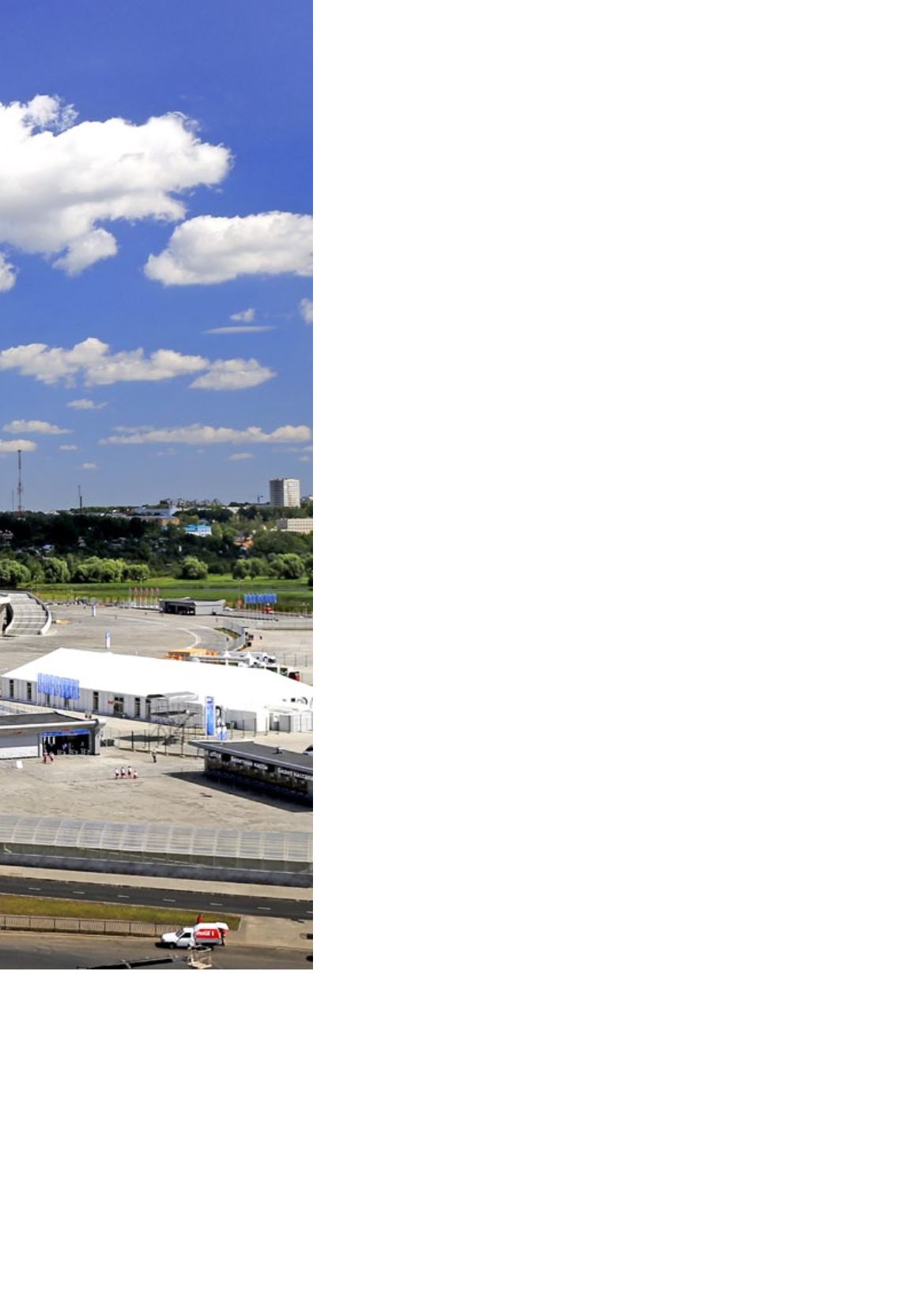

this new standard, a group of experts was
established in early 2014 under the aus-
pices of the RussianMinistry of Natural Re-
sources and Ecology.
The group is led by Professor Yuri
Tabunshchikov, who won a Nobel Prize
as part of an intergovernmental group
of specialists studying climate change.
Prof. Tabunshchikov is also a Russia’ s
leading expert in heating, ventilation,
air-conditioning, heat supply and build-
ing thermal physics.
«Drawing up a Russian green stand-
ard is a truly major task, and an impor-
tant one at that, – Prof. Tabunshchikov
said. – Establishing a national environ-
mental standard specially adapted for
football stadiums will be a huge step
forward for Russia. The new stand-
ard will be an important part of the
World Cup's legacy, and it can serve as
a platform for the country to develop
a whole new generation of top-quality
specialists.»
«Sustainable building is becoming
a leading trend and is rapidly gather-
ing momentum. – Guy Eames, chief
executive of the Russian Green Build-
ing Council (RuGBC). – With the de-
signing, construction and rebuilding
of Russia 2018 stadiums now in full
flow, minimising environmental im-
pact – both during construction and
once the arenas are operational – is
assuming paramount importance. The
LOC and the FIFA World Cup stadi-
um authorities are committed to en-
suring that stadiums are certified as
compliant with FIFA's requirement
for sustainable stadium construction.
Furthermore, drawing up a national
standard to certify stadiums is facili-
tating the construction of sporting in-
frastructure in Russia in a sustainable
and cost-effective manner. This work-
shop brought together leading ex-
perts, key people in this field, and the
process of dialogue has begun. It's
difficult to overstate the importance
of this work, – stressed Guy Eames,
chief executive of the Russian Green
Building Council (RuGBC). – The ef-
fects of using green technologies will
be felt for many decades to come.
Not only will all Russia 2018 host cit-
ies have their stadiums certified as
required by FIFA, they are also draw-
ing up plans for other major green
construction projects.»
«It's really important for us to see
mentalities in Russia changing, » –
Eames continued. – I'm talking about
architects and developers. Five years
ago, there weren't many people in Rus-
sia who knew what these standards
were meant to achieve, but now there
are hundreds of specialists working in
the sustainable building industry. Sus-
tainable building is becoming a leading
trend and is rapidly gathering momen-
tum, despite the economic difficulties.
Of course, all facilities built on the basis
of green standards will enjoy undoubt-
ed advantages. »
Drawing up a national green standard
for stadiums is an important element of
the Russia 2018 Sustainability Strategy,
which is to be officially launched at the
Preliminary Draw for the tournament,
scheduled to take place this July in Saint
Petersburg.
«We are very pleased with the efforts
undertaken by the Russian green stand-
ard working group, the LOC and Minis-
try of Natural Resources and Environ-
ment of the Russian Federation in the
past months and believe that this new
improved standard for green and sus-
tainable buildings will become the first
legacy of the 2018 FIFA World Cup™», –
said Federico Addiechi, Head of Sustain-
ability at FIFA.
According to Alexey Sorokin, CEO of
the Russia 2018 LOC, new approach-
es to the environmental certification
of Russia 2018 stadiums provide an op-
portunity to set a genuinely high stand-
ard for sports construction in the host
country.
«What we’re now seeing is how prep-
arations for the first World Cup in Rus-
sia are becoming a catalyst for impor-
tant changes in all sorts of areas of
life, – Sorokin said. – Building World Cup
stadiums in accordance with Russia’s
green standard will allow us to create
resource-effective, safe and comforta-
ble football arenas, as well as taking en-
vironmental responsibility to a whole
new level throughout the country.»
●
Весна 2015
З Д А Н И Я В Ы С О К И Х Т Е Х Н О Л О Г И Й
105

















